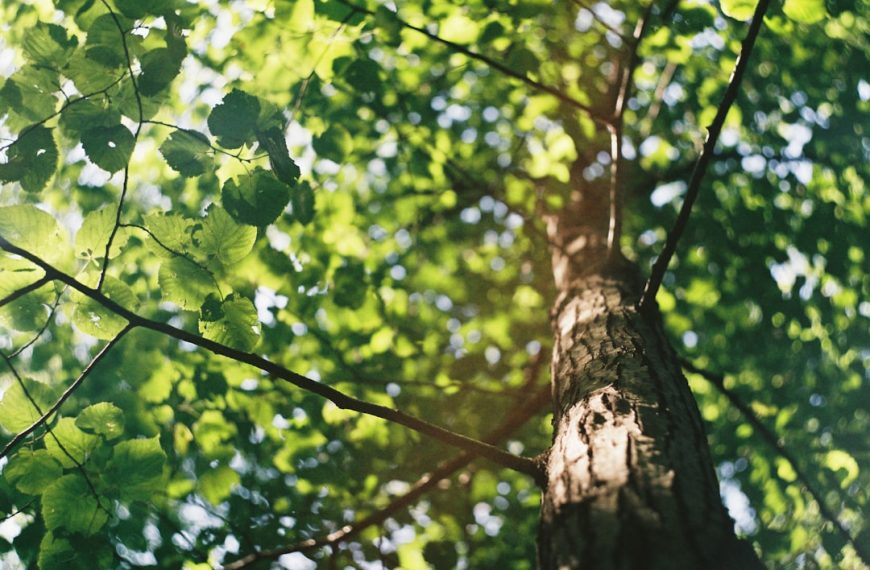Tree stump grindings are the small wood chips and debris that are left behind after a tree stump has been ground down. When a tree is cut down, the remaining stump can be an eyesore in your garden or landscape. However, instead of removing the entire stump, many people choose to have it ground down to below ground level. This process involves using a stump grinder, which is a powerful machine that grinds the stump into small pieces.
The process of making tree stump grindings begins with the use of a stump grinder. This machine has a rotating cutting wheel with sharp teeth that grind away at the stump. As the wheel spins, it cuts through the wood, turning it into small chips and debris. The grindings are then collected and can be used in various ways, such as mulch or compost.
The Benefits of Using Tree Stump Grindings in Your Garden or Landscape
Using tree stump grindings in your garden or landscape can provide numerous benefits. Here are some of the advantages of using tree stump grindings:
1. Natural and organic material: Tree stump grindings are a natural and organic material that can be used to improve the health of your soil. Unlike synthetic materials, such as plastic mulch, tree stump grindings break down over time and add nutrients to the soil.
2. Cost-effective: Using tree stump grindings as mulch is a cost-effective option for your garden or landscape. Instead of purchasing mulch from a store, you can use the grindings from your own property, saving you money in the long run.
3. Helps retain moisture in soil: Tree stump grindings act as a natural mulch, helping to retain moisture in the soil. This is especially beneficial during dry periods when water conservation is important.
4. Reduces erosion: By using tree stump grindings as mulch, you can help reduce erosion in your garden or landscape. The grindings create a protective layer on the soil, preventing it from being washed away during heavy rain.
5. Adds nutrients to soil: As tree stump grindings break down, they release nutrients into the soil. This can help improve the fertility of your soil and promote healthy plant growth.
Creative Ways to Use Tree Stump Grindings as Mulch
Tree stump grindings can be used as mulch in various areas of your garden or landscape. Here are some creative ways to use tree stump grindings as mulch:
1. Around trees and shrubs: Spread a layer of tree stump grindings around the base of your trees and shrubs. This will help retain moisture in the soil and provide a natural and organic mulch.
2. In flower beds: Use tree stump grindings as mulch in your flower beds to help suppress weeds and retain moisture in the soil. The grindings will also add a natural and rustic look to your flower beds.
3. In vegetable gardens: Apply a layer of tree stump grindings to your vegetable garden to help retain moisture and suppress weeds. The grindings will also break down over time, adding nutrients to the soil.
4. In container gardens: Use tree stump grindings as mulch in your container gardens to help retain moisture and prevent weed growth. The grindings will also add a natural and organic element to your containers.
5. In pathways and walkways: Spread a layer of tree stump grindings on pathways and walkways in your garden or landscape. This will provide a natural and rustic look, while also helping with drainage and reducing erosion.
How to Prepare Tree Stump Grindings for Use as Mulch
| Step | Description |
|---|---|
| 1 | Remove any rocks or debris from the stump grindings. |
| 2 | Spread the grindings out in a thin layer to dry for a few days. |
| 3 | Turn the grindings over with a rake to ensure even drying. |
| 4 | Check the moisture level of the grindings with a moisture meter. They should be below 35% moisture content. |
| 5 | Spread the grindings around plants, trees, or shrubs in a layer no more than 3 inches thick. |
| 6 | Do not pile the grindings against the trunk of plants or trees as it can cause rot. |
| 7 | Reapply the grindings every 6-12 months to maintain a healthy soil environment. |
Before using tree stump grindings as mulch, it is important to prepare them properly. Here are some steps to follow to prepare tree stump grindings for use as mulch:
1. Allow grindings to age: After grinding a tree stump, it is best to allow the grindings to age for a few months before using them as mulch. This will give them time to break down and decompose, making them easier to spread and less likely to attract pests.
2. Mix with other organic material: To improve the quality of the grindings, mix them with other organic material, such as leaves or grass clippings. This will help add nutrients to the soil and improve the overall health of your garden or landscape.
3. Apply a layer of compost: Before spreading the tree stump grindings as mulch, apply a layer of compost to the soil. This will provide additional nutrients and help improve the fertility of the soil.
Using Tree Stump Grindings to Improve Soil Quality
Using tree stump grindings can help improve the quality of your soil in several ways:
1. Adds nutrients to soil: As tree stump grindings break down, they release nutrients into the soil. This can help improve the fertility of your soil and provide essential nutrients for plant growth.
2. Improves soil structure: Tree stump grindings can help improve the structure of your soil by adding organic matter. This can help improve drainage and aeration, which are important for healthy plant growth.
3. Increases soil fertility: By adding organic matter to the soil, tree stump grindings can increase its fertility. This can result in healthier plants and better yields in your garden or landscape.
The Environmental Benefits of Using Tree Stump Grindings as Mulch

Using tree stump grindings as mulch can have several environmental benefits:
1. Reduces waste in landfills: By using tree stump grindings as mulch, you are reducing the amount of waste that ends up in landfills. Instead of disposing of the grindings, you are repurposing them and putting them to good use in your garden or landscape.
2. Reduces carbon emissions: Using tree stump grindings as mulch can help reduce carbon emissions. By using organic mulch instead of synthetic materials, you are reducing the demand for the production and transportation of these materials, which can contribute to carbon emissions.
3. Promotes sustainable gardening practices: Using tree stump grindings as mulch promotes sustainable gardening practices. By using natural and organic materials, you are reducing the need for synthetic fertilizers and pesticides, which can be harmful to the environment.
Tree Stump Grindings as a Natural Weed Suppressant
One of the benefits of using tree stump grindings as mulch is that it can help suppress weed growth in your garden or landscape. Here’s how tree stump grindings can act as a natural weed suppressant:
1. Helps prevent weed growth: Tree stump grindings create a protective layer on the soil, preventing weed seeds from germinating and growing. This can help reduce the amount of time and effort spent on weeding your garden or landscape.
2. Reduces the need for chemical herbicides: By using tree stump grindings as mulch, you can reduce the need for chemical herbicides to control weeds. This is not only better for the environment but also for your health and the health of your plants.
Using Tree Stump Grindings to Create Pathways and Walkways
In addition to using tree stump grindings as mulch, they can also be used to create pathways and walkways in your garden or landscape. Here are some reasons why using tree stump grindings for pathways and walkways is beneficial:
1. Provides a natural and rustic look: Tree stump grindings provide a natural and rustic look to pathways and walkways. They add texture and interest to your landscape, creating a unique and visually appealing feature.
2. Helps with drainage: Tree stump grindings can help with drainage in pathways and walkways. They allow water to flow through, preventing puddles and reducing the risk of erosion.
3. Reduces erosion: By using tree stump grindings for pathways and walkways, you can help reduce erosion. The grindings create a protective layer on the soil, preventing it from being washed away during heavy rain.
Tree Stump Grindings as a Decorative Element in Your Landscape
In addition to their practical uses, tree stump grindings can also be used as a decorative element in your landscape. Here’s how tree stump grindings can enhance the aesthetic appeal of your garden or landscape:
1. Adds texture and interest: Tree stump grindings add texture and interest to your landscape. They provide a natural and organic element that can enhance the overall look and feel of your garden or landscape.
2. Can be used in various landscaping designs: Tree stump grindings can be used in various landscaping designs, such as woodland gardens or naturalistic landscapes. They can be arranged in different patterns or shapes to create unique and visually appealing features.
3. Provides a natural and organic element: Using tree stump grindings as a decorative element in your landscape adds a natural and organic touch. It creates a harmonious and cohesive look that blends well with the surrounding environment.
How to Make the Most of Your Tree Stump Grindings
In conclusion, tree stump grindings are a valuable resource that can be used in various ways to improve your garden or landscape. By using them as mulch, you can benefit from their natural and organic properties, such as moisture retention, weed suppression, and nutrient enrichment. Additionally, tree stump grindings can be used to create pathways and walkways, adding a rustic and natural look to your landscape. With proper preparation and application, you can make the most of your tree stump grindings and enjoy the many benefits they provide.













